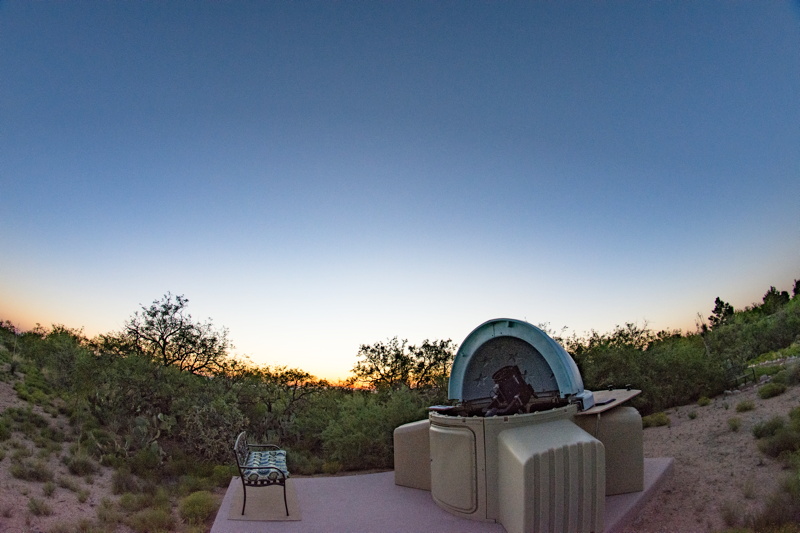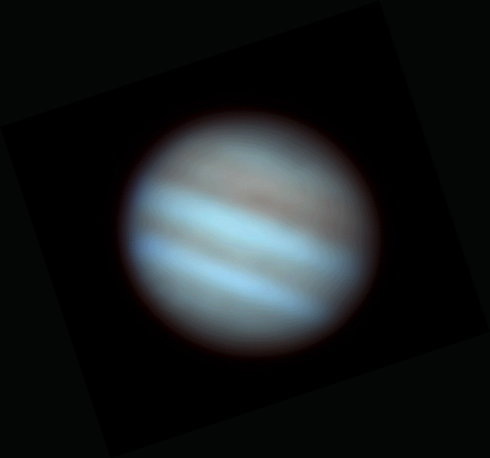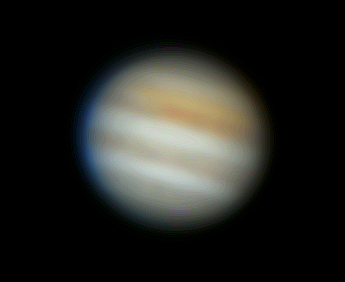Zodiacal Light with SkyTracker Pro, Virgo Galaxies;
Astronomer A.E. Douglass & Oracle
Posted: 21 April 2017
|
Open: Thursday, 20 April 2017, 1840 MST Temperature: 89°F |
Session: 1102 Conditions: Clear |
Equipment Used:
12" f/8 LX600 w/StarLock
2" 24mm UWA eyepiece
1.25" 9mm eyepiece
1.25" Barlow Lens
SkyTracker Pro
Camera:
D7200 DSLR
After opening the observatory I set up the Nikon D7200 DSLR with a Rokinon 8mm fisheye lens on the iOptron SkyTracker Pro:

I would use the SkyTracker Pro and fisheye lens to photograph the Zodiacal Light after the end of Astronomical Twilight (2024 MST). While waiting I relaxed on the bench (seen at the left of the camera tripod in the photo above). 1859 MST: sunset. 1906 MST: took this photo of the observatory and western sky with the D7200 DSLR and 8mm fisheye lens:

I continued relaxing on the bench and began "watching the stars come out". 2000 MST: polar aligned the SkyTracker Pro (see the review linked above for a description of how that is done). The Zodiacal Light was already visible.
2031 MST: took this f/5, 60 seconds, ISO 5000, FL 8mm, photograph with the SkyTracker Pro set to track at 1/2X Sidereal rate:

The Zodiacal Light is clearly visible beginning just to the left of the observatory dome and extending upward and to left into the constellation of Gemini. The constellation of Taurus is below center, with a flaring satellite visible just above it. The constellation of Orion is setting behind the tree on the left, with the bright star Sirius further to the left. The skyglow at the left is from Oro Valley. The Winter Milky Way is visible going horizontally across much of the photo from above Sirius and Orion and reaching to near the horizon to the right of the dome. At 1/2X Sidereal tracking rate the stars are still sharp and the observatory shows very little blurring from the camera movement.
2101 MST: f/5, 60 seconds, ISO 5000, FL 8mm, photograph with the SkyTracker Pro set to track at 1X Sidereal rate:

The Zodiacal Light and Winter Milky Way are still visible. The 1X Sidereal tracking rate has blurred out the observatory more during the 1 minute exposure, but not significantly so with the extreme wide-angle view using the fisheye lens.
2102 MST: ended Zodiacal Light photography. I had planned to do other photography of the Zodiacal Light this night but I had to wait for long periods of time between the photos to avoid getting airplane light trails in the photos! I'm happy with what I did manage to photograph.
2108 MST: LX600 ON, StarLock OFF, High Precision OFF. Viewed Jupiter, 102X. The four Galilean Moons were visible. Began setting up for eyepiece projection imaging of Jupiter using the D7200 DSLR. This is a stack of 318 HD video frames (10 seconds), 1/30sec, ISO 6400, at 542X:

I removed the 2X Barlow Lens for this 271X image, which is a stack of 315 HD video frames (10 seconds), 1/30sec, ISO 800:

2134 MST: ended Jupiter imaging.
2145 MST: slewed to M86 (galaxy in the Virgo Galaxy Cluster). Using the 2" 24mm UWA eyepiece (102X) I could see the galaxies M86 and M84 and several other galaxies in the same eyepiece field-of-view. I SYNCed the AutoStar on M86. I then moved the dome onto the POD Zenith Table. Mounted the DSLR on the 12" telescope at prime focus + focal reducer, focused on the star Denebola, and locked the telescope primary mirror. Slewed back to M86.
2202 MST: StarLock ON. Did some framing test images using 1 minute, ISO 6400, White Balance 3570K, exposures. I quickly saw that seeing was lousy as StarLock autoguiding was frequently very bad. I was not able to get any good exposures longer than 1 minute. This is one of those 1 minute, ISO 6400, exposures:

Mouseover or tap on image for labels
I will try again on a future session.
2232 MST: gave up on imaging. StarLock OFF.
2249 MST: took a last look at Jupiter, 102X. 2254 MST: LX600 OFF. Moved the dome back onto the observatory.
|
Close: Thursday, 20 April 2017, 2300 MST Temperature: 60°F |
Session Length: 4h 20m Conditions: Clear |
A member of the Oracle Dark Skies Committee loaned me her copy of this book:

From our work to get Oracle State Park designated as an IDA "International Dark Sky Park" in 2014 I had first learned about A.E. Douglass and his involvement in Arizona astronomy. I also new about the gift from Oracle resident Lavinia Steward:

But I did not know that Steward Observatory almost ended up in Oracle:

Wonderful place for Cassiopeia Observatory!
On my previous two reports I discussed not being able to observe the Near Earth Object 2014 JO25 due to some error. I had used the iOS app SkySafari 5 Pro to GOTO the object. Thanks to a site visitor I saw a report that someone else had the same problem and noted that it was an error in SkySafari 5 Pro with this object. Grumble.
Comments are welcome using Email. Twitter users can use the button below to tweet this report to your followers. Thanks.
Cassiopeia Observatory Home Page
Copyright ©2017 Michael L. Weasner / mweasner@me.com
URL = http://www.weasner.com/co/Reports/2017/04/21/index.html
